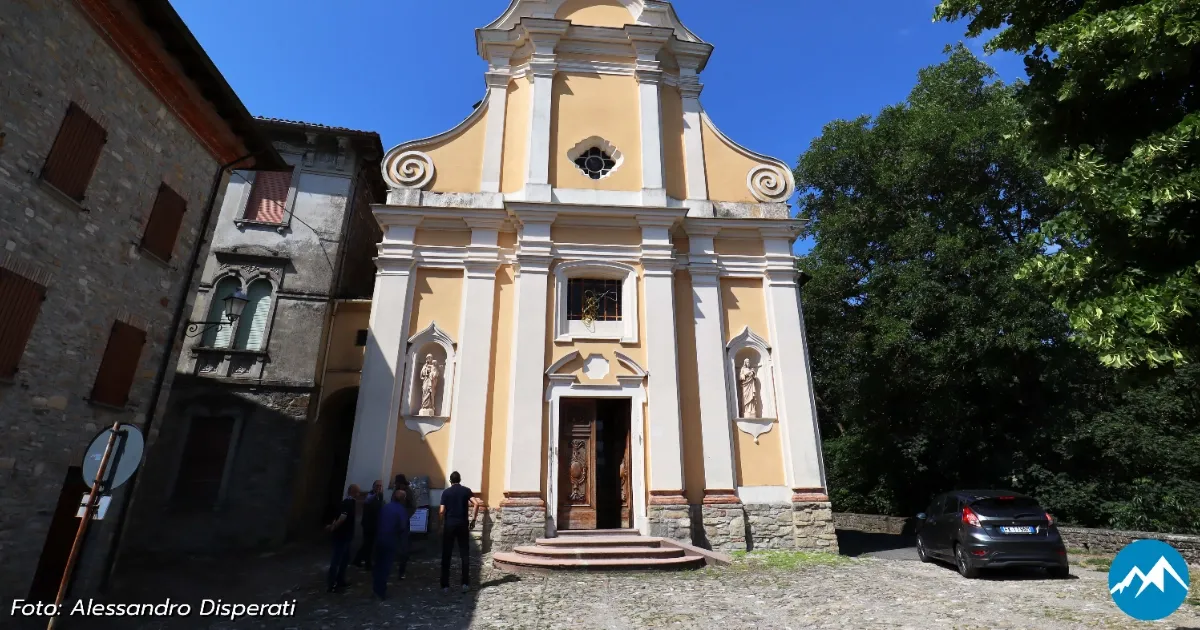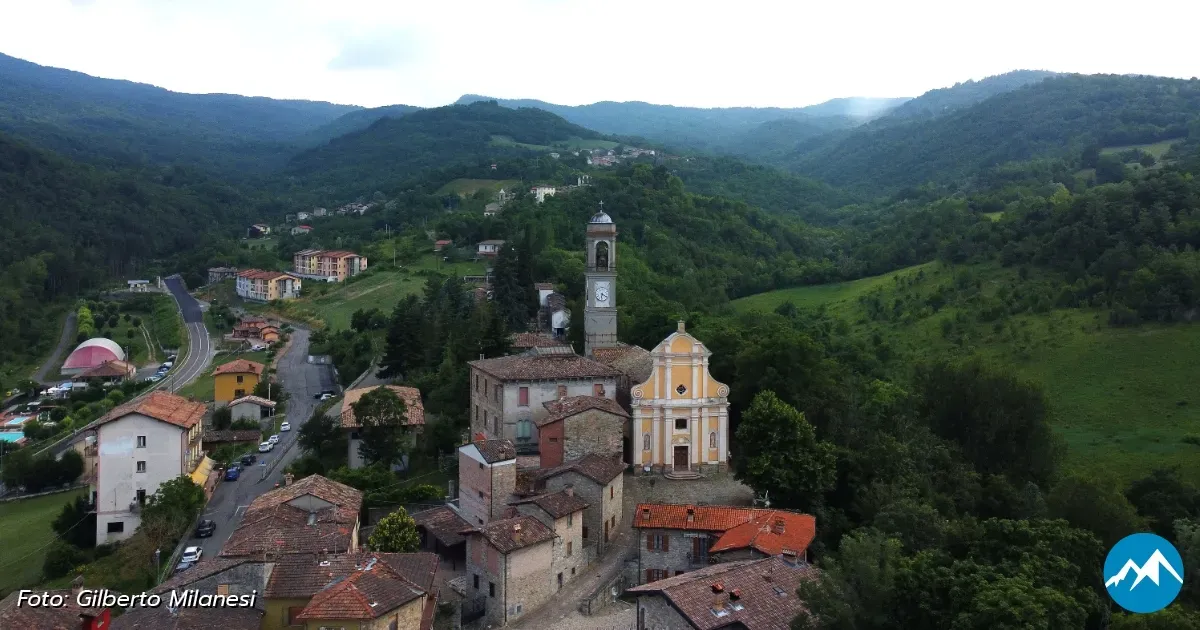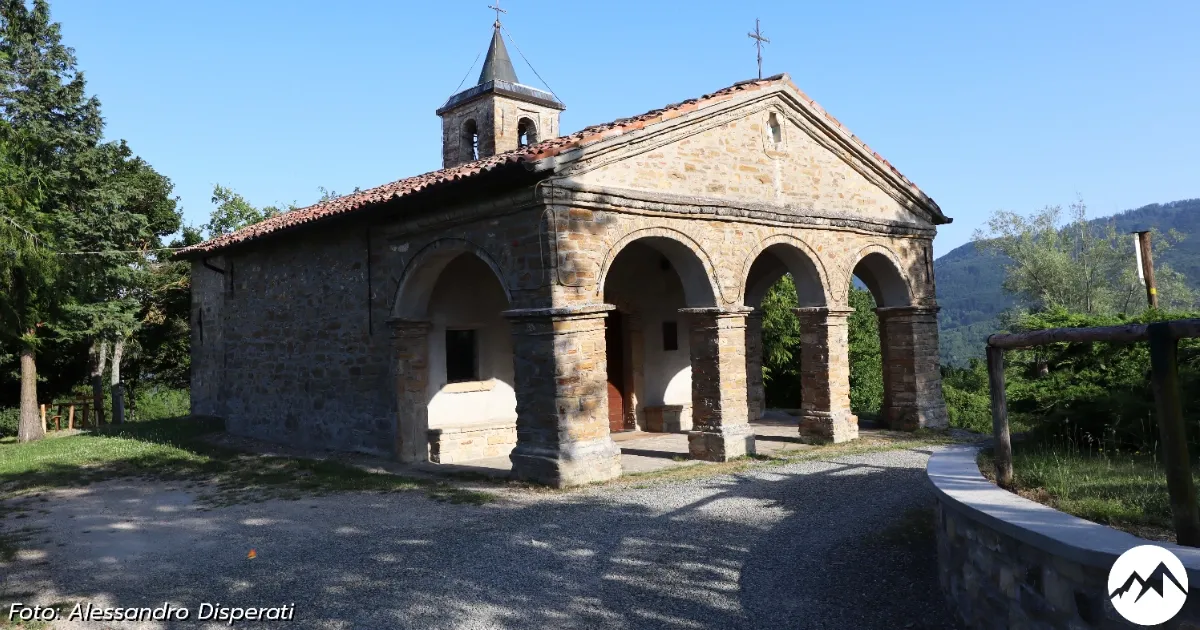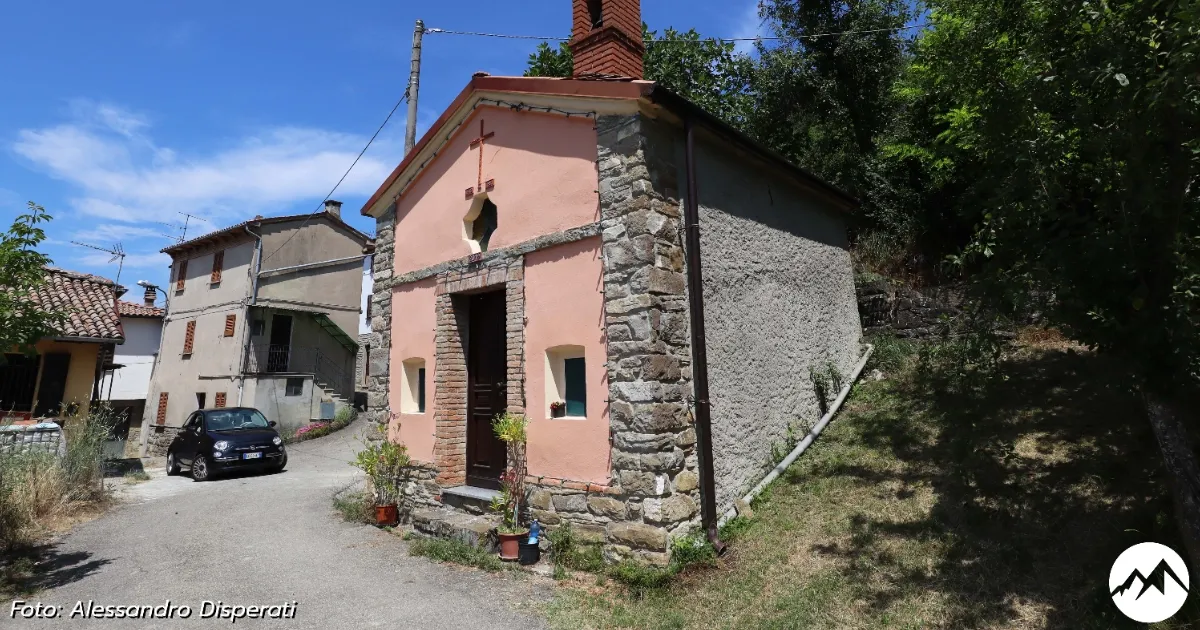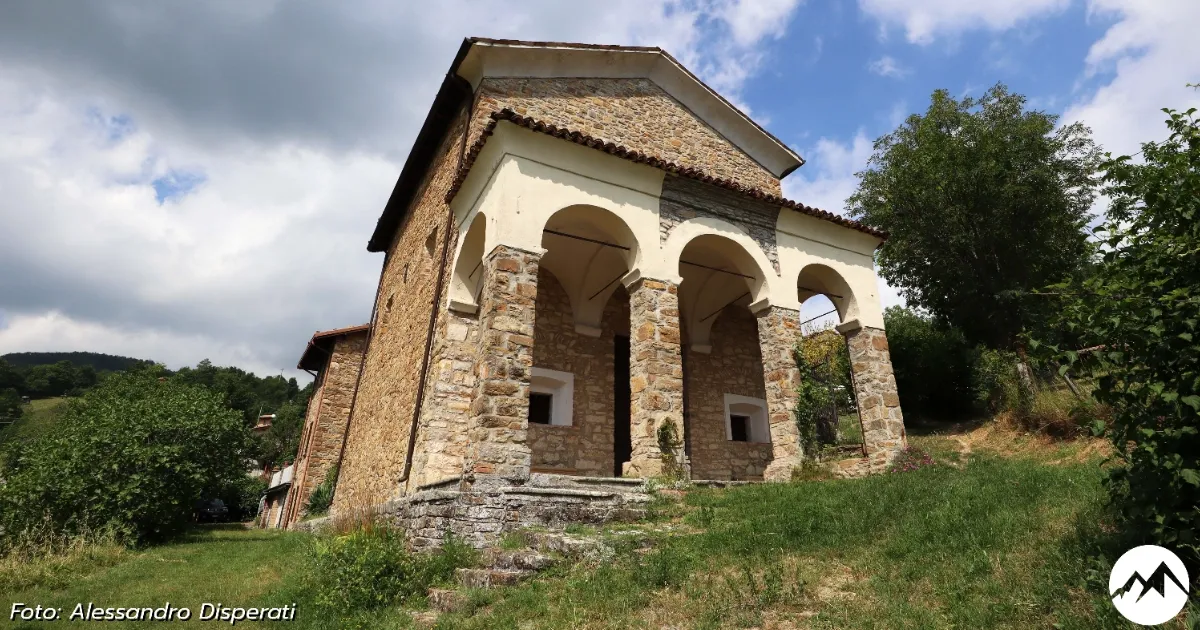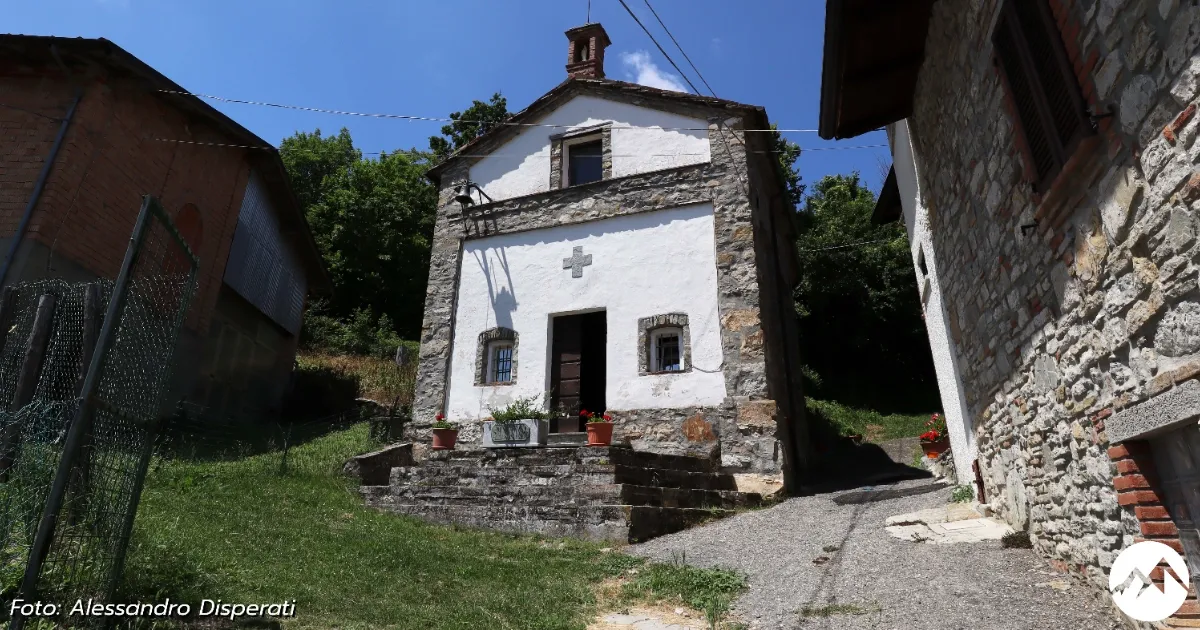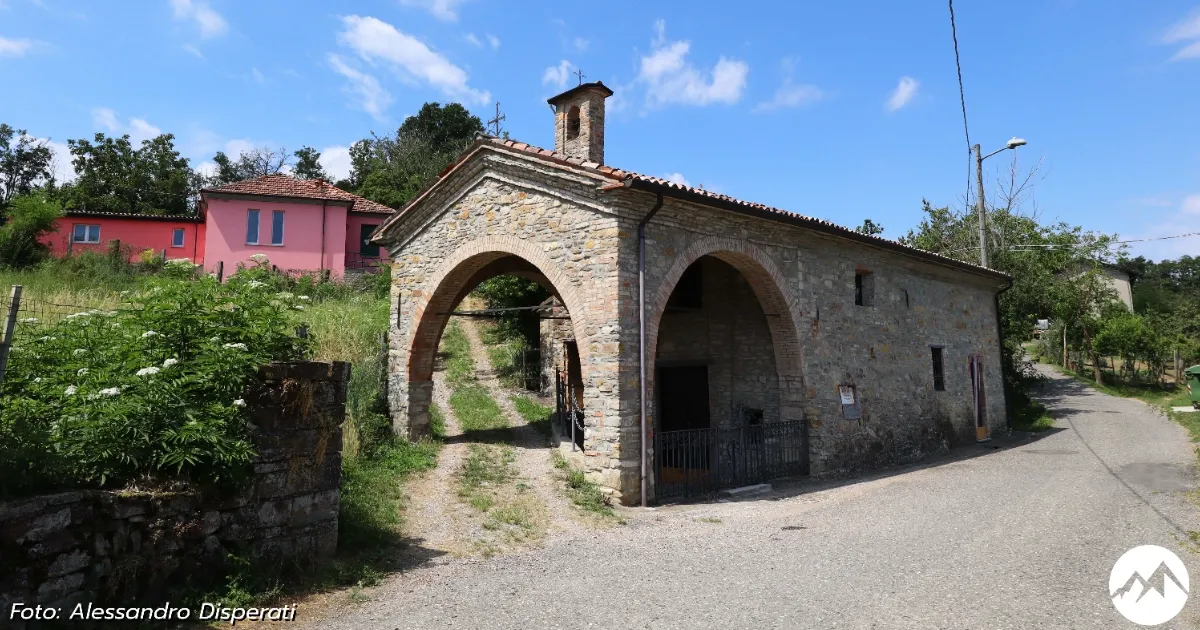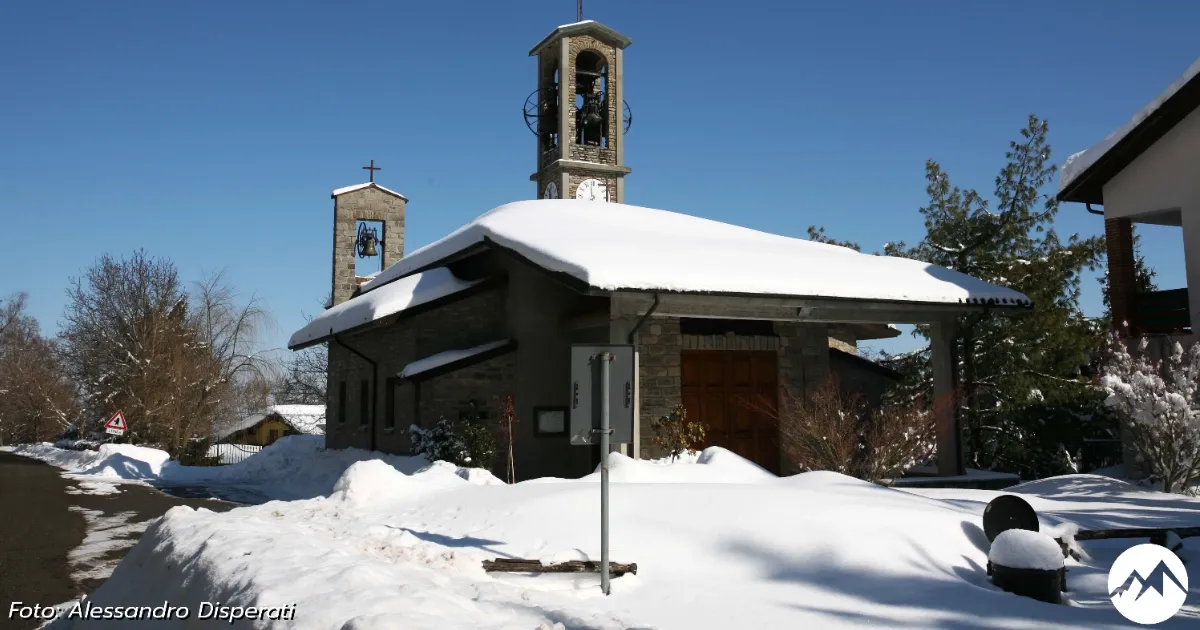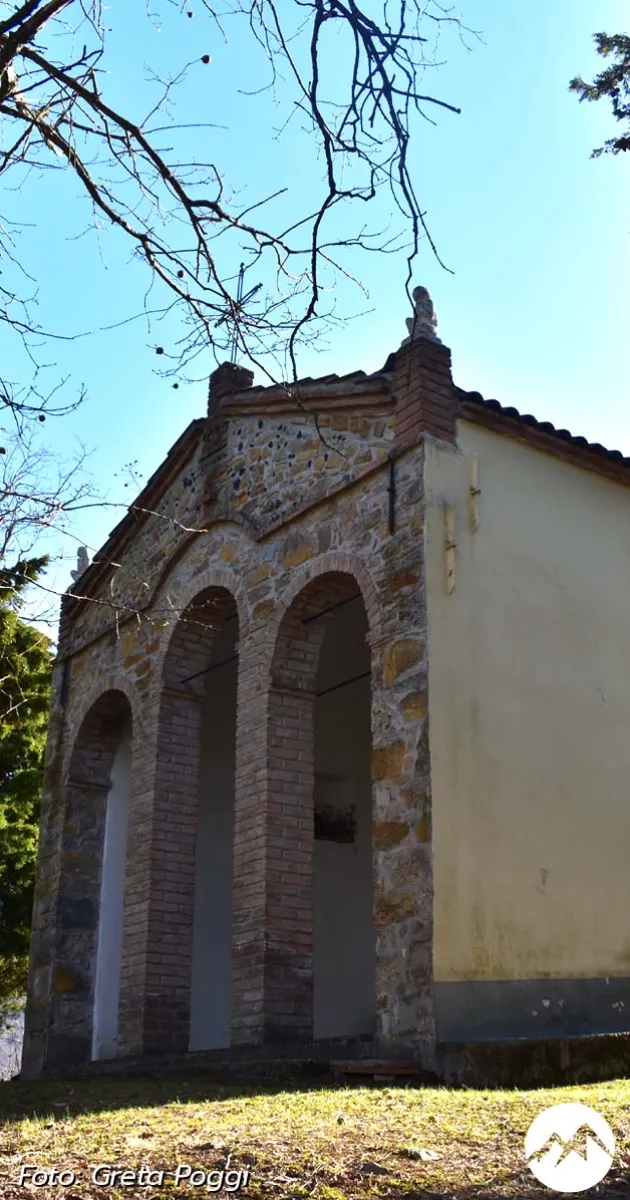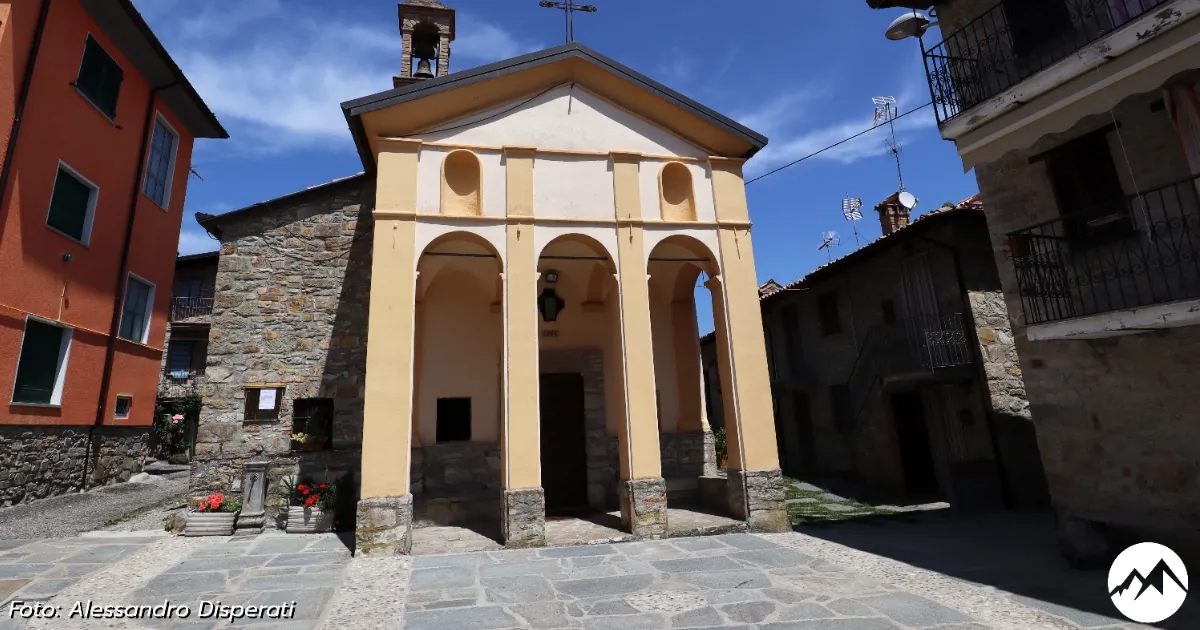Le chiese parrocchiali si trovano a Romagnese capoluogo, dedicata a San Lorenzo, nella frazione di Gabbione, dedicata alla Maternità di Maria Vergine e a San Carlo, e nella località turistica di Casa Matti dedicata a Cristo Lavoratore.
Percorrendo le numerose stradine che portano da una frazione all’altra del comune, si possono incontrare piccoli e caratteristici oratori, costruiti nei secoli dagli abitanti delle varie frazioni di Romagnese. Ad esclusione dell’oratorio di Zuccarello, che si raggiunge solo a piedi, tutti gli altri possono essere visitati raggiungendo le varie frazioni in auto.
Chiesa Parrocchiale di San Lorenzo
Naviga verso questo luogo
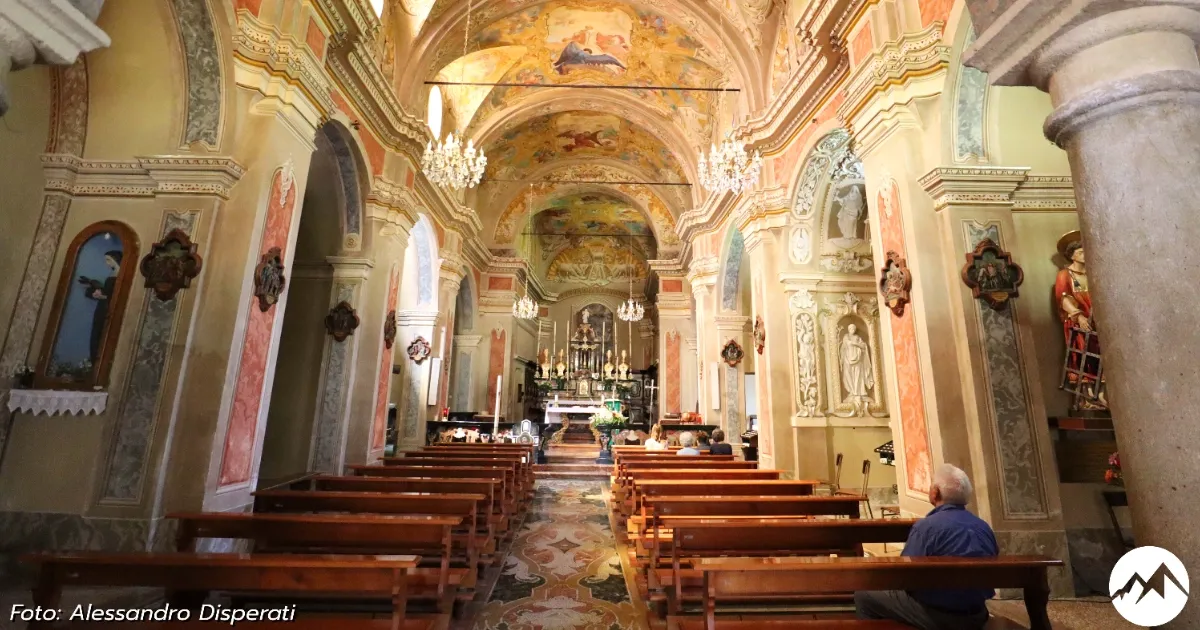 Il borgo di Romagnese è dominato dalla chiesa parrocchiale dedicata a San Lorenzo. Una più antica chiesa dedicata allo stesso Santo è citata in alcuni documenti come chiesa “Della Gera” che si trova sulla riva destra del torrente Tidone, nel luogo che oggi viene comunemente chiamato Cenotafio degli Alpini. La costruzione dell'attuale chiesa parrocchiale iniziò intorno alla metà del XVI secolo, ma fu completata solo nel 1728. In quell'anno, la chiesa fu ampliata e all'ingresso venne aggiunta una tribuna sostenuta da colonne di pietra; successivamente, venne costruita una seconda tribuna sopra la prima... [ prosegue nell'articolo]
Il borgo di Romagnese è dominato dalla chiesa parrocchiale dedicata a San Lorenzo. Una più antica chiesa dedicata allo stesso Santo è citata in alcuni documenti come chiesa “Della Gera” che si trova sulla riva destra del torrente Tidone, nel luogo che oggi viene comunemente chiamato Cenotafio degli Alpini. La costruzione dell'attuale chiesa parrocchiale iniziò intorno alla metà del XVI secolo, ma fu completata solo nel 1728. In quell'anno, la chiesa fu ampliata e all'ingresso venne aggiunta una tribuna sostenuta da colonne di pietra; successivamente, venne costruita una seconda tribuna sopra la prima... [ prosegue nell'articolo]
Cenotafio degli Alpini
Naviga verso questo luogo
 La lunga storia della vecchia Chiesa della Gera, oggi nota come Cenotafio degli Alpini. Nel 1605 esisteva già una cappella chiamata Chiesa della Gera, situata presso il vecchio cimitero. La chiesa, dopo essere stata vandalizzata, venne sconsacrata, restaurata e riconsacrata nel 1610. Successivamente, subì nuovamente atti di vandalismo, venendo nuovamente sconsacrata, restaurata e riadattata per il culto nel 1732, mantenendo il titolo di Chiesetta della Gera. La gestione della chiesetta fu affidata ai frazionisti delle località di Molino Castana, Poggio Castello, Alliata e alcune famiglie della frazione Castello, collaboratori del parroco locale... [ prosegue nell'articolo]
La lunga storia della vecchia Chiesa della Gera, oggi nota come Cenotafio degli Alpini. Nel 1605 esisteva già una cappella chiamata Chiesa della Gera, situata presso il vecchio cimitero. La chiesa, dopo essere stata vandalizzata, venne sconsacrata, restaurata e riconsacrata nel 1610. Successivamente, subì nuovamente atti di vandalismo, venendo nuovamente sconsacrata, restaurata e riadattata per il culto nel 1732, mantenendo il titolo di Chiesetta della Gera. La gestione della chiesetta fu affidata ai frazionisti delle località di Molino Castana, Poggio Castello, Alliata e alcune famiglie della frazione Castello, collaboratori del parroco locale... [ prosegue nell'articolo]
Chiesa di Gabbione
Naviga verso questo luogo
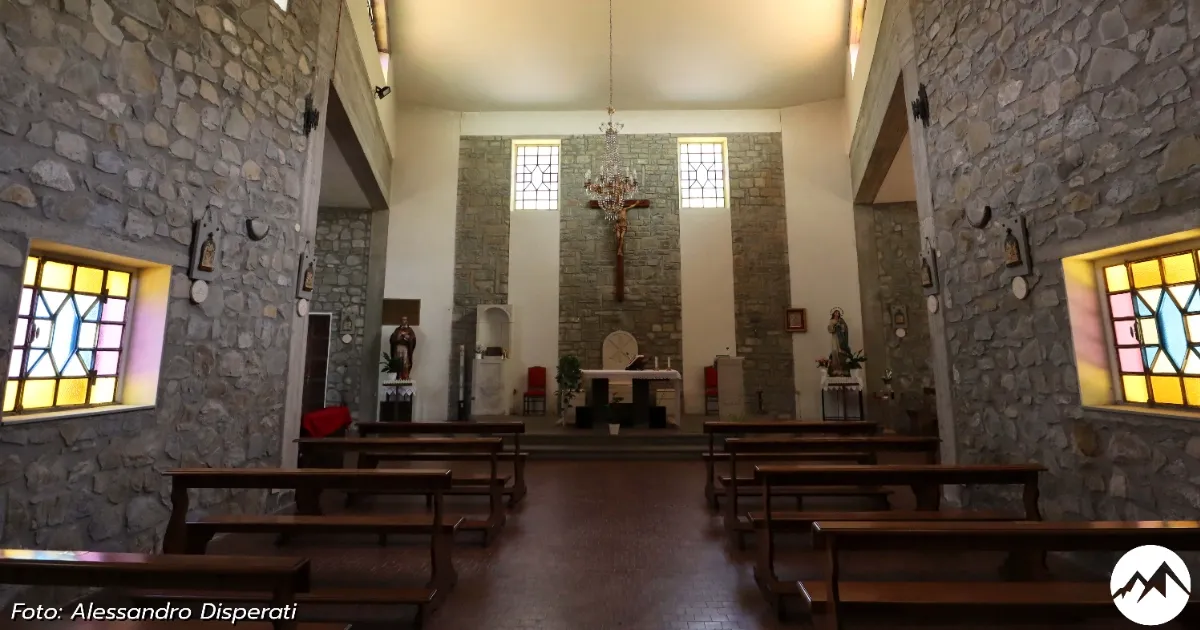 Gabbione è una delle frazioni più popolate di Romagnese, in centro del paese si trova la chiesa parrocchiale dedicata alla Maternità di Maria Vergine e a San Carlo.
Gabbione è una delle frazioni più popolate di Romagnese, in centro del paese si trova la chiesa parrocchiale dedicata alla Maternità di Maria Vergine e a San Carlo.
Un primo oratorio fu costruito nel 1841 per volere degli abitanti di Gabbione e delle frazioni limitrofe per essere stati preservati dal colera. Nel 1955 venne costruita la nuova parrocchia di Santa Maria Assunta. Ancora oggi si celebra la Santa Messa della domenica.
La festa patronale viene celebrata il 15 agosto.
Chiesa di Casa Matti
Naviga verso questo luogo
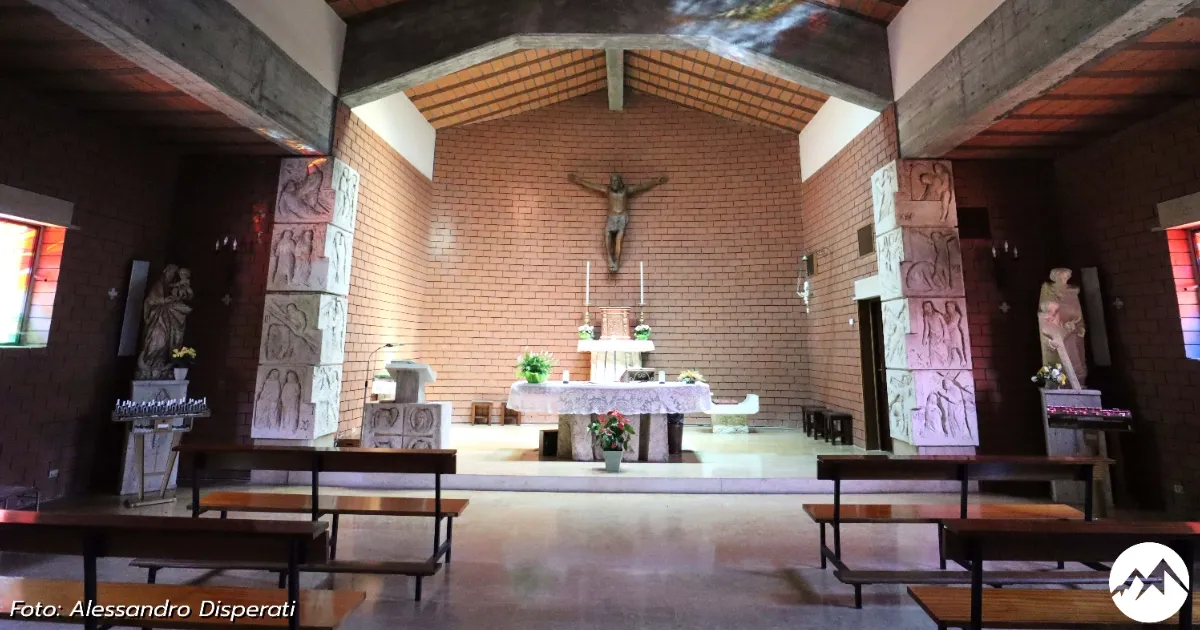 Di tutte le 40 frazioni di Romagnese, Casa Matti, che si trova a ridosso del Monte Penice, è quella che ha conosciuto il maggior sviluppo turistico. Qui si trova la chiesa dedicata a Cristo Lavoratore che fu edificata nel 1957 ed è posta a ridosso della strada statale che scende a Romagnese. All’interno spicca un pregevole crocifisso in legno della Val Gardena realizzato dallo scultore Mussner. La festa patronale viene celebrata la seconda domenica di maggio, la Madonna dell’Aiuto, patrona dell’ottocentesco oratorio ormai in disuso da quando è stata realizzata la nuova chiesa. Questo tempio fu costruito nel 1868 per voto degli abitanti della frazione quando in tutto il territorio si diffuse il colera.
Di tutte le 40 frazioni di Romagnese, Casa Matti, che si trova a ridosso del Monte Penice, è quella che ha conosciuto il maggior sviluppo turistico. Qui si trova la chiesa dedicata a Cristo Lavoratore che fu edificata nel 1957 ed è posta a ridosso della strada statale che scende a Romagnese. All’interno spicca un pregevole crocifisso in legno della Val Gardena realizzato dallo scultore Mussner. La festa patronale viene celebrata la seconda domenica di maggio, la Madonna dell’Aiuto, patrona dell’ottocentesco oratorio ormai in disuso da quando è stata realizzata la nuova chiesa. Questo tempio fu costruito nel 1868 per voto degli abitanti della frazione quando in tutto il territorio si diffuse il colera.
Oratorio di Casa Picchi
Naviga verso questo luogo
 Pur non sapendo la data esatta in cui venne eretto, è comunque certo che questo oratorio fosse presente nei primi anni del 1600, e qui venivano celebrate funzioni religiose fino al 1732. Sulla sinistra dell’oratorio si trova un altare in pietra che fu fatto costruire nel 1680 da Alberto Rossi con l’obbligo di celebrarvi la messa tutti i mercoledì. Attiguo all’Oratorio esiste tuttora l’antico campanile. Mentre l’Oratorio esternamente ha mantenuto intatta la primitiva linea architettonica, il campanile ha subito, nel corso delle varie riparazioni, una notevole alterazione del proprio stile romanico nella parte superiore di copertura. Dedicato alla Beata Vergine della Misericordia, l'oratorio di Casa Picchi è il punto di riferimento per la funzione religiosa del Giovedì Santo. In questa occasione, una suggestiva processione parte dalla chiesa parrocchiale di Romagnese e segue un anonimo penitente incappucciato che porta una croce di legno, snodandosi fino all'oratorio stesso. La festa patronale viene celebrata l’8 dicembre.
Pur non sapendo la data esatta in cui venne eretto, è comunque certo che questo oratorio fosse presente nei primi anni del 1600, e qui venivano celebrate funzioni religiose fino al 1732. Sulla sinistra dell’oratorio si trova un altare in pietra che fu fatto costruire nel 1680 da Alberto Rossi con l’obbligo di celebrarvi la messa tutti i mercoledì. Attiguo all’Oratorio esiste tuttora l’antico campanile. Mentre l’Oratorio esternamente ha mantenuto intatta la primitiva linea architettonica, il campanile ha subito, nel corso delle varie riparazioni, una notevole alterazione del proprio stile romanico nella parte superiore di copertura. Dedicato alla Beata Vergine della Misericordia, l'oratorio di Casa Picchi è il punto di riferimento per la funzione religiosa del Giovedì Santo. In questa occasione, una suggestiva processione parte dalla chiesa parrocchiale di Romagnese e segue un anonimo penitente incappucciato che porta una croce di legno, snodandosi fino all'oratorio stesso. La festa patronale viene celebrata l’8 dicembre.
Oratorio di Villa Costa
Naviga verso questo luogo
 Dedicato ai Santi Fabiano e Sebastiano, la tradizione vuole che questa chiesetta sia stata realizzata al tempo della peste di Milano, tra il 1576 il 1584. Qui veniva celebrata la messa il 20 gennaio giorno di San Sebastiano. Il portichetto antistante l’oratorio, in stile non definito, è stato aggiunto in epoca più recente. L’oratorio si presenta a tre navate divise tra loro da archi a tutto sesto. Presenta una torre campanaria in linea con il fianco destro. La festa patronale si celebra il 20 gennaio, San Sebastiano, e il 5 febbraio, Sant’Agata.
Dedicato ai Santi Fabiano e Sebastiano, la tradizione vuole che questa chiesetta sia stata realizzata al tempo della peste di Milano, tra il 1576 il 1584. Qui veniva celebrata la messa il 20 gennaio giorno di San Sebastiano. Il portichetto antistante l’oratorio, in stile non definito, è stato aggiunto in epoca più recente. L’oratorio si presenta a tre navate divise tra loro da archi a tutto sesto. Presenta una torre campanaria in linea con il fianco destro. La festa patronale si celebra il 20 gennaio, San Sebastiano, e il 5 febbraio, Sant’Agata.
Oratorio di Totonenzo
Naviga verso questo luogo
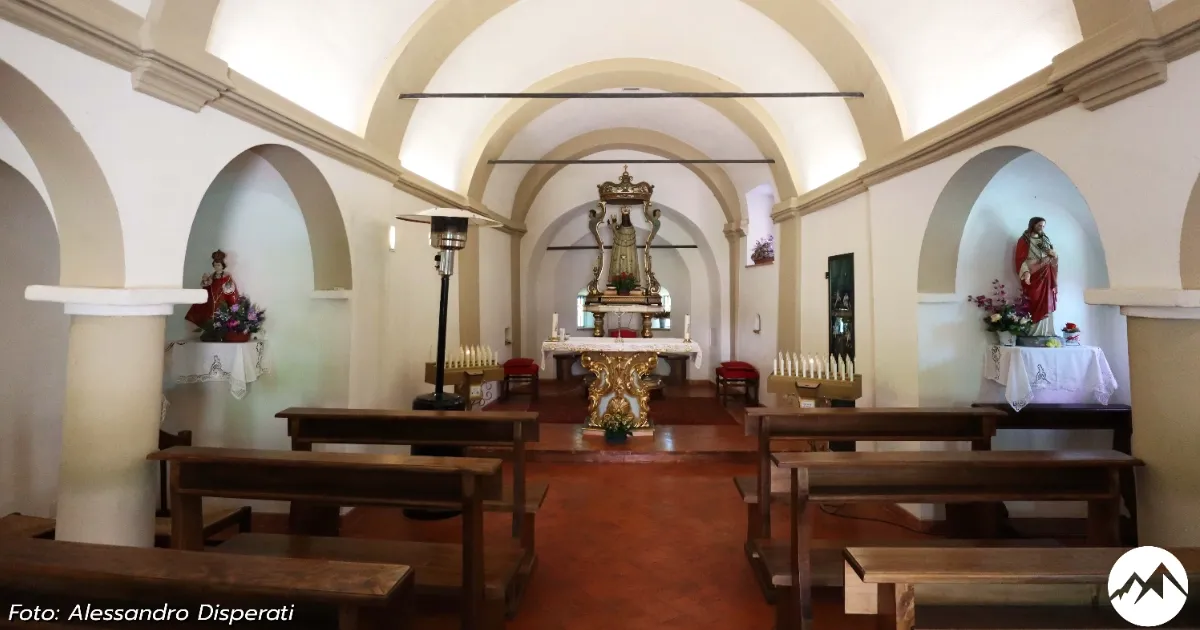 Dedicata a Nostra Signora di Loreto. La chiesetta sorge in aperta campagna tra le frazioni di Casa Rocchi e Crotta. Non si conosce l’epoca di costruzione, ma è da ritenersi senz’altro molto antica, probabilmente anteriore all’XI secolo. Originariamente era privo della volta e del portichetto antistante, costruiti entrambi verso la fine del 1800. Sorge nei pressi di un parco giochi, circondato dal verde, da dove si gode una bella vista sull’Alta Val Tidone. All’interno si trova la scultura lignea raffigurante la Madonna di Loreto con Bambino, con il volto nero e i lunghi capelli sciolti, realizzata fra il XVIII e il XIX secolo. La festa patronale viene celebrata la prima domenica di settembre.
Dedicata a Nostra Signora di Loreto. La chiesetta sorge in aperta campagna tra le frazioni di Casa Rocchi e Crotta. Non si conosce l’epoca di costruzione, ma è da ritenersi senz’altro molto antica, probabilmente anteriore all’XI secolo. Originariamente era privo della volta e del portichetto antistante, costruiti entrambi verso la fine del 1800. Sorge nei pressi di un parco giochi, circondato dal verde, da dove si gode una bella vista sull’Alta Val Tidone. All’interno si trova la scultura lignea raffigurante la Madonna di Loreto con Bambino, con il volto nero e i lunghi capelli sciolti, realizzata fra il XVIII e il XIX secolo. La festa patronale viene celebrata la prima domenica di settembre.
Oratorio di Ossio
Naviga verso questo luogo
 Fu costruito con ogni probabilità attorno al 1760 per volere degli abitanti di Ossio, Bregni e Costaiola ed è dedicato alla Beata Vergine delle Grazie. Nel 1869, dinanzi all chiesetta, venne costruito un portichetto. Solitamente vi si celebrano la festa della Beata Vergine di Caravaggio e la festa patronale del 5 agosto dedicata alla Madonna della Neve. La costruzione è situata al margine della strada che attraversa la frazione. Si presenta ad un’unica navata rettangolare, all’interno spicca una croce d’altare con base triangolare risalente al XIX secolo realizzata in ottone. La festa patronale viene celebrata la prima domenica di agosto.
Fu costruito con ogni probabilità attorno al 1760 per volere degli abitanti di Ossio, Bregni e Costaiola ed è dedicato alla Beata Vergine delle Grazie. Nel 1869, dinanzi all chiesetta, venne costruito un portichetto. Solitamente vi si celebrano la festa della Beata Vergine di Caravaggio e la festa patronale del 5 agosto dedicata alla Madonna della Neve. La costruzione è situata al margine della strada che attraversa la frazione. Si presenta ad un’unica navata rettangolare, all’interno spicca una croce d’altare con base triangolare risalente al XIX secolo realizzata in ottone. La festa patronale viene celebrata la prima domenica di agosto.
Oratorio di Villa Casa
Naviga verso questo luogo
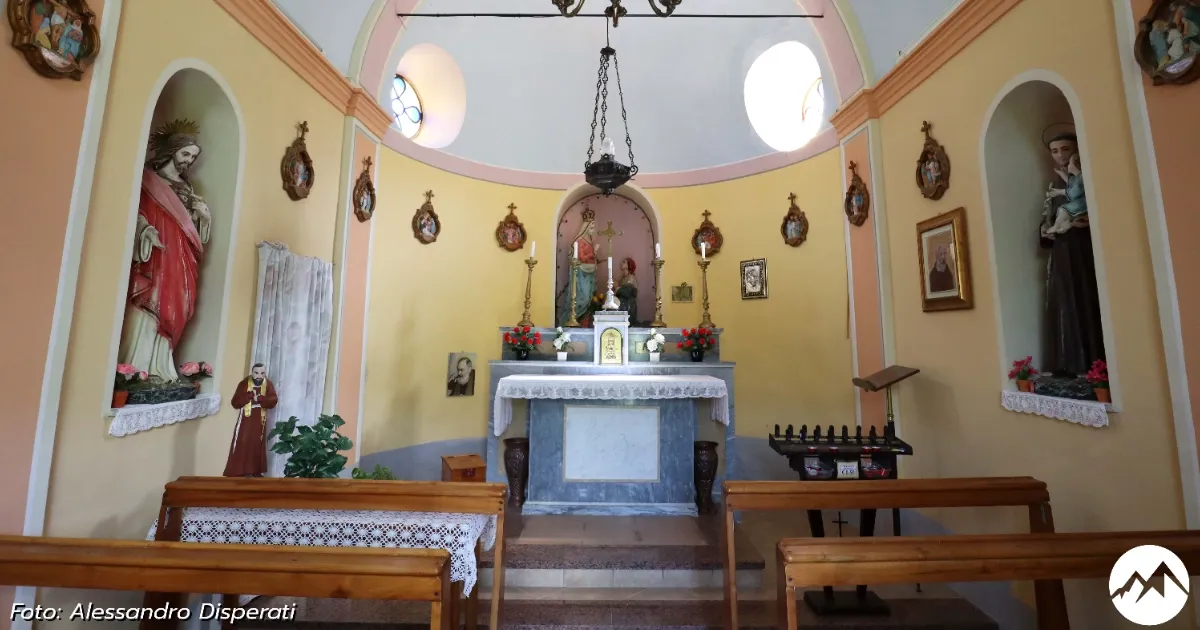 Lungo una delle due strade che da Romagnese portano a Grazzi e da qui al Giardino Alpino di Pietra Corva, sorge la frazione di Villa Casa. Qui si trova l’oratorio che, proprio come quello di Casa Villa, è dedicato a Nostra Signora di Caravaggio. Come altri oratori presenti su tutto il territorio comunale anche questo fu costruito per voto degli abitanti a seguito dell’epidemia del colera. Risale al 1851 e proprio in quell’anno un decreto vescovile stabiliva la celebrazione della messa il 26 agosto. Attorno al 1882 l’oratorio fu distrutto da una frana e venne ricostruito alcuni decenni dopo, ancora oggi si presenta in tutto il suo splendore. La festa patronale viene celebrata il 15 agosto.
Lungo una delle due strade che da Romagnese portano a Grazzi e da qui al Giardino Alpino di Pietra Corva, sorge la frazione di Villa Casa. Qui si trova l’oratorio che, proprio come quello di Casa Villa, è dedicato a Nostra Signora di Caravaggio. Come altri oratori presenti su tutto il territorio comunale anche questo fu costruito per voto degli abitanti a seguito dell’epidemia del colera. Risale al 1851 e proprio in quell’anno un decreto vescovile stabiliva la celebrazione della messa il 26 agosto. Attorno al 1882 l’oratorio fu distrutto da una frana e venne ricostruito alcuni decenni dopo, ancora oggi si presenta in tutto il suo splendore. La festa patronale viene celebrata il 15 agosto.
Oratorio di Casa Ariore
Naviga verso questo luogo
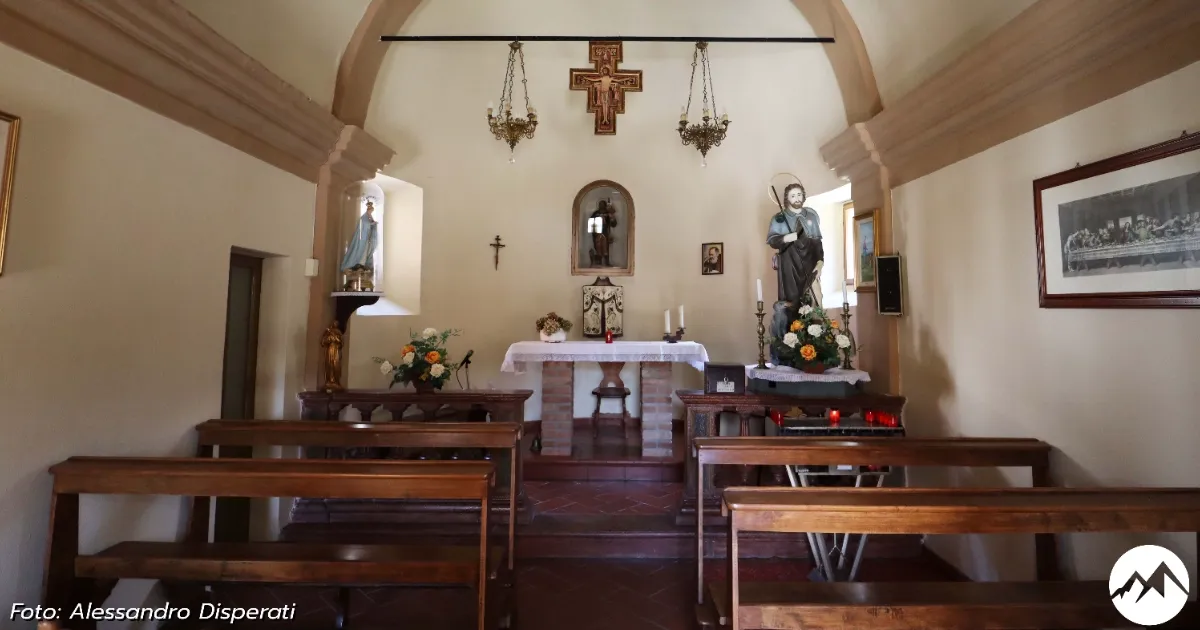 Casa Ariore s’incontra subito dopo Casa Picchi, lungo la strada comunale che sale a ridosso delle pendici del Monte Calenzone. In paese sorge l’oratorio dedicato a San Rocco che fu costruito tra il 1855 ed il 1856 a cura e spese degli abitanti dei villaggi di Ariore, Ghiozzi e Villa per essere preservati e liberati, per mezzo dell’intercessione di San Rocco dal colera che in quel tempo infieriva nelle parrocchie vicine. Si presenta ad un’unica navata con abside e sulla sinistra dell’edificio svetta la torretta campanaria realizzata anch’essa in pietra vista. Una decina di anni più tardi fu costruito un portichetto dinanzi all’ingresso e sulla torretta del campanile fu innalzata una campanella di bronzo. La festa patronale viene celebrata il 16 agosto.
Casa Ariore s’incontra subito dopo Casa Picchi, lungo la strada comunale che sale a ridosso delle pendici del Monte Calenzone. In paese sorge l’oratorio dedicato a San Rocco che fu costruito tra il 1855 ed il 1856 a cura e spese degli abitanti dei villaggi di Ariore, Ghiozzi e Villa per essere preservati e liberati, per mezzo dell’intercessione di San Rocco dal colera che in quel tempo infieriva nelle parrocchie vicine. Si presenta ad un’unica navata con abside e sulla sinistra dell’edificio svetta la torretta campanaria realizzata anch’essa in pietra vista. Una decina di anni più tardi fu costruito un portichetto dinanzi all’ingresso e sulla torretta del campanile fu innalzata una campanella di bronzo. La festa patronale viene celebrata il 16 agosto.
Oratorio di Casa Villa
Naviga verso questo luogo
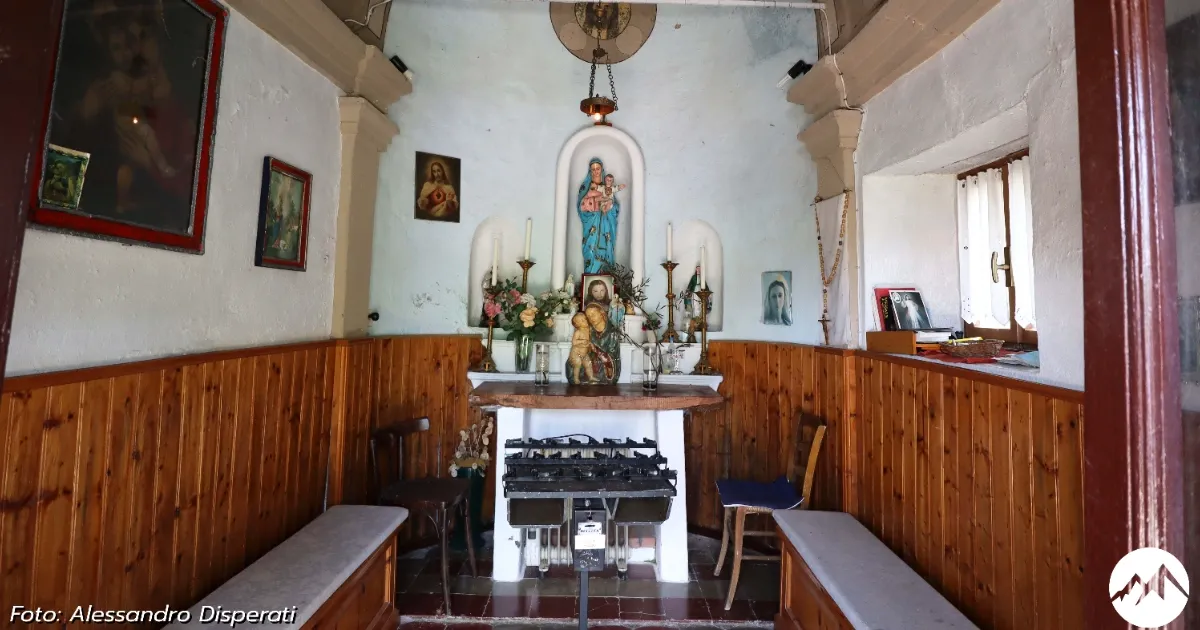 Casa Villa si trova lungo la strada comunale che da Casa Picchi sale a Zuccarello. Nel centro della frazione si trova l’oratorio dedicato a Nostra Signora di Caravaggio. Fu costruito nel 1851 e riedificato dopo il 1882. La curiosità di questo oratorio è quella di avere l’abside inglobata in un altro edificio. Presenta una facciata caratterizzata da un ingresso rettangolare e ai lati sono presenti due finestrelle a feritoia. Sopra l’ingresso si trova una monofora quadrilobata. L’abside presenta una nicchia centrale e due nicchie più piccole laterali. L’oratorio è a pianta rettangolare, ad un’unica navata con abside semicircolare. Da questa località si gode un bel panorama verso Romagnese e il crinale dell’Appennino.
Casa Villa si trova lungo la strada comunale che da Casa Picchi sale a Zuccarello. Nel centro della frazione si trova l’oratorio dedicato a Nostra Signora di Caravaggio. Fu costruito nel 1851 e riedificato dopo il 1882. La curiosità di questo oratorio è quella di avere l’abside inglobata in un altro edificio. Presenta una facciata caratterizzata da un ingresso rettangolare e ai lati sono presenti due finestrelle a feritoia. Sopra l’ingresso si trova una monofora quadrilobata. L’abside presenta una nicchia centrale e due nicchie più piccole laterali. L’oratorio è a pianta rettangolare, ad un’unica navata con abside semicircolare. Da questa località si gode un bel panorama verso Romagnese e il crinale dell’Appennino.
Oratorio di Zuccarello
Naviga verso questo luogo
Zuccarello si raggiunge seguendo la strada comunale che da Romagnese porta a Casa Picchi, Casa Ariore e Casa Villa. 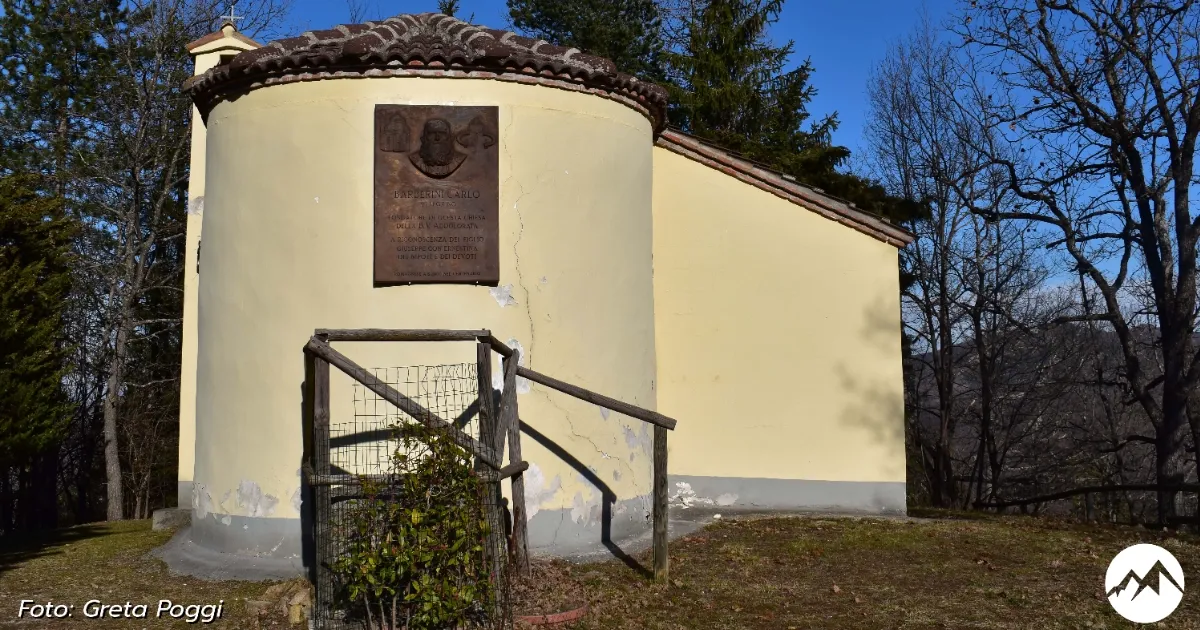 La strada va poi a terminare in questa piccola frazione posta a ridosso delle pendici del Monte Calenzone e non lontano dalle cascate del Rio Rivarolo. A Zuccarello si trova uno degli oratori più antichi di Romagnese: quello dedicato alla Madonna Addolorata. Le opere per la costruzione di questa chiesetta furono avviate nel 1891 per un voto fatto da Carlo Barberini di Casa Ariore e portato a termine nel 1935 dal figlio.
La strada va poi a terminare in questa piccola frazione posta a ridosso delle pendici del Monte Calenzone e non lontano dalle cascate del Rio Rivarolo. A Zuccarello si trova uno degli oratori più antichi di Romagnese: quello dedicato alla Madonna Addolorata. Le opere per la costruzione di questa chiesetta furono avviate nel 1891 per un voto fatto da Carlo Barberini di Casa Ariore e portato a termine nel 1935 dal figlio.
La festa di Zuccarello si tiene la terza domenica di settembre.
Oratorio di Grazzi
Naviga verso questo luogo
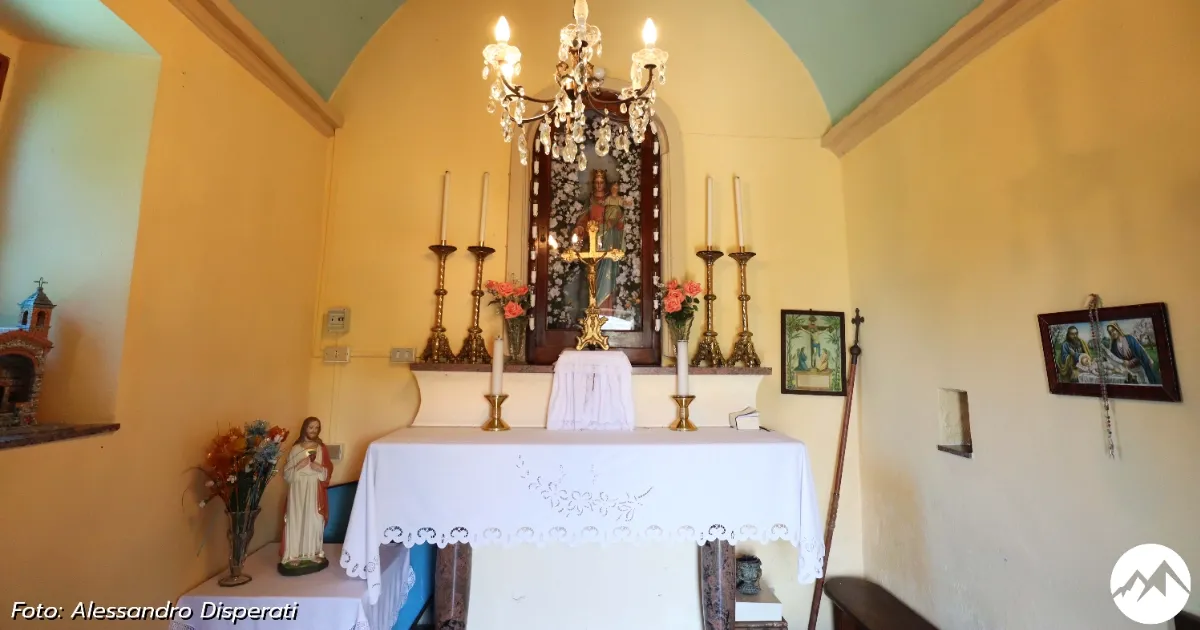 Usciti dal centro storico di Romagnese, percorrendo la statale 412 della Val Tidone, in direzione Zavattarello, prendendo il primo bivio a destra, si sale alle frazioni di Grazzi Inferiore e Grazzi Superiore. Qui si trova l’oratorio dedicato a Maria Ausiliatrice che fu costruito a cura degli abitanti delle due piccole frazioni nel 1920. L’oratorio è di modeste dimensioni ma accogliente. Sorge in località Grazzi Inferiore ed è situato su di un’altura a ridosso della strada che attraversa la frazione. Si presenta a pianta rettangolare ad un’unica navata con torre campanaria posta sul lato destro, realizzata in pietra a vista. La festa patronale viene celebrata il 24 maggio.
Usciti dal centro storico di Romagnese, percorrendo la statale 412 della Val Tidone, in direzione Zavattarello, prendendo il primo bivio a destra, si sale alle frazioni di Grazzi Inferiore e Grazzi Superiore. Qui si trova l’oratorio dedicato a Maria Ausiliatrice che fu costruito a cura degli abitanti delle due piccole frazioni nel 1920. L’oratorio è di modeste dimensioni ma accogliente. Sorge in località Grazzi Inferiore ed è situato su di un’altura a ridosso della strada che attraversa la frazione. Si presenta a pianta rettangolare ad un’unica navata con torre campanaria posta sul lato destro, realizzata in pietra a vista. La festa patronale viene celebrata il 24 maggio.
Oratorio di Casa Pilla
Naviga verso questo luogo
Casa Pilla è una caratteristica frazione che sorge sulle colline sulla sponda destra del torrente Tidone.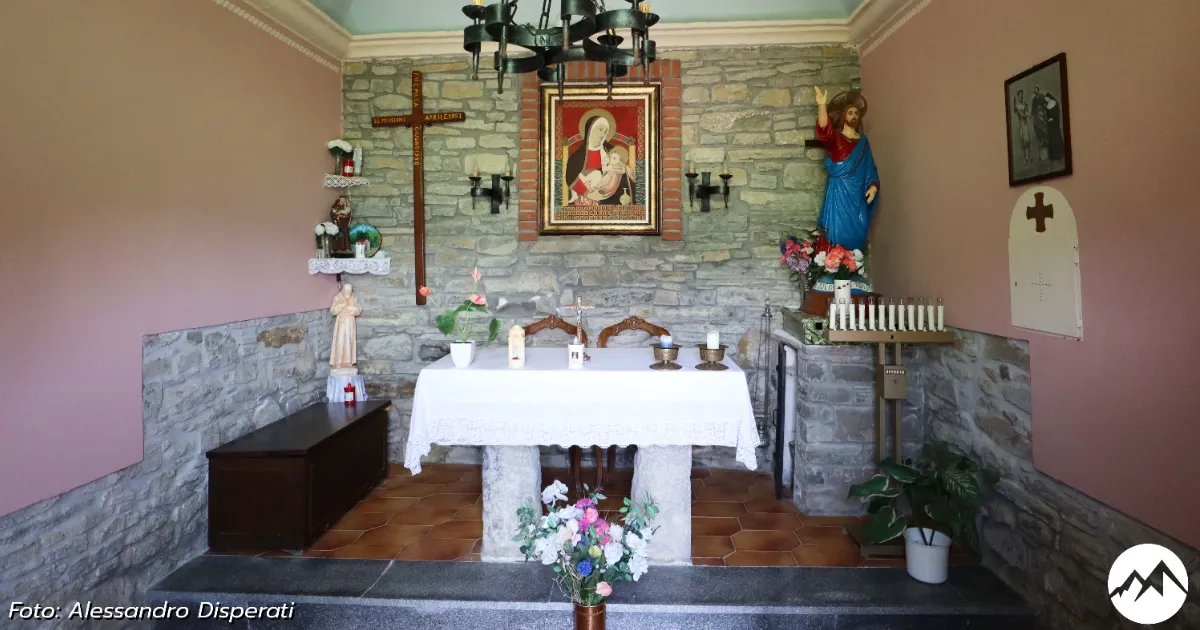 L’oratorio di Casa Pilla fu costruito nel 1919 grazie agli abitanti di questa piccola frazione che sostennero le spese per la realizzazione della caratteristica chiesetta . L’oratorio sorge proprio nel cuore della frazione ed è dedicato a Cristo Re. Si presenta con pianta rettangolare ad un’unica navata, l’interno è decorato da una cornice a modanatura composita. La facciata si presenta con intonaco dipinto e pilastri angolari in pietre squadrate.
L’oratorio di Casa Pilla fu costruito nel 1919 grazie agli abitanti di questa piccola frazione che sostennero le spese per la realizzazione della caratteristica chiesetta . L’oratorio sorge proprio nel cuore della frazione ed è dedicato a Cristo Re. Si presenta con pianta rettangolare ad un’unica navata, l’interno è decorato da una cornice a modanatura composita. La facciata si presenta con intonaco dipinto e pilastri angolari in pietre squadrate.
La festa patronale viene celebrata la prima domenica dopo il 15 di agosto.


 Comune di Romagnese
Comune di Romagnese

